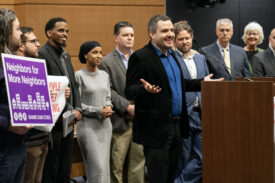Brookings scholar Eugenie Birch has an interesting paper on trends in downtown living in 44 major US cities between 1970 and 2000—finding that, on average, downtown homeownership, educational levels, and racial and ethnic diversity all increased over the period. Also—and unsurprisingly—downtown residents tend to be younger than they used to be. City living apparently developed a cachet among the 25-to-34 age demographic that it didn’t have 30 years before.
The worst news—but also unsurprising—is that downtowns are economically stratified, with some downtown census tracts having particularly high incomes, and others with particularly low incomes.
But most relevant to the Northwest is this: in percentage terms, Seattle ranked second of all 44 cities in downtown population growth. As a whole, the city of Seattle grew 7 percent total in 3 decades—a fairly slow pace of growth. But the downtown population grew by 86 percent. Similarly, Portland ranks sixth on the list for downtown growth, with a population increase of 56 percent since 1970. Meanwhile, Boise’s downtown population fell by a quarter—which is a bit of a surprise, given how quickly the city is growing. Overall, only 15 of the 44 cities saw their downtown populations increase between 1970 and 2000—this despite a fairly widespread increase in downtown populations in the 1990s.
Of course, these figures may be misleading in some respects. Some cities, particularly in the industrial midwest and along the eastern seaboard, started out with comparatively dense and populous downtowns in the 1970s, but have seen substantial declines since then; Detroit, St. Louis, and Baltimore fall into that camp. Still, even if those downtowns lost population in absolute terms, they may still be far denser & more populous than the downtowns in many of the newer cities in the US west. Just so, Seattle’s downtown started the 1970s with a fairly small population base—so an 86 percent increase, as big a deal as it is in relative terms, is small potatoes in absolute terms.
So: relative to where they started in 1970, the downtowns of Seattle and Portland Northwest are growing quickly. But there’s still a long way to go before they’re as lively as, say, San Francisco, Boston, or Manhattan.








